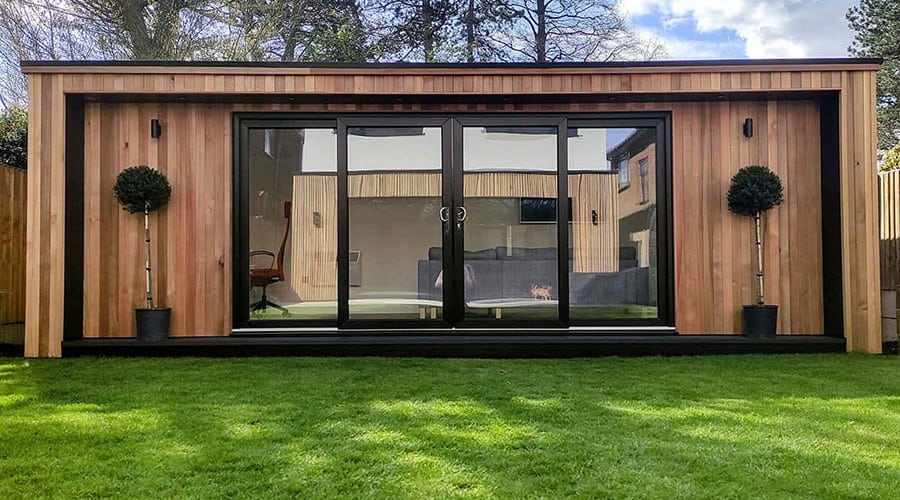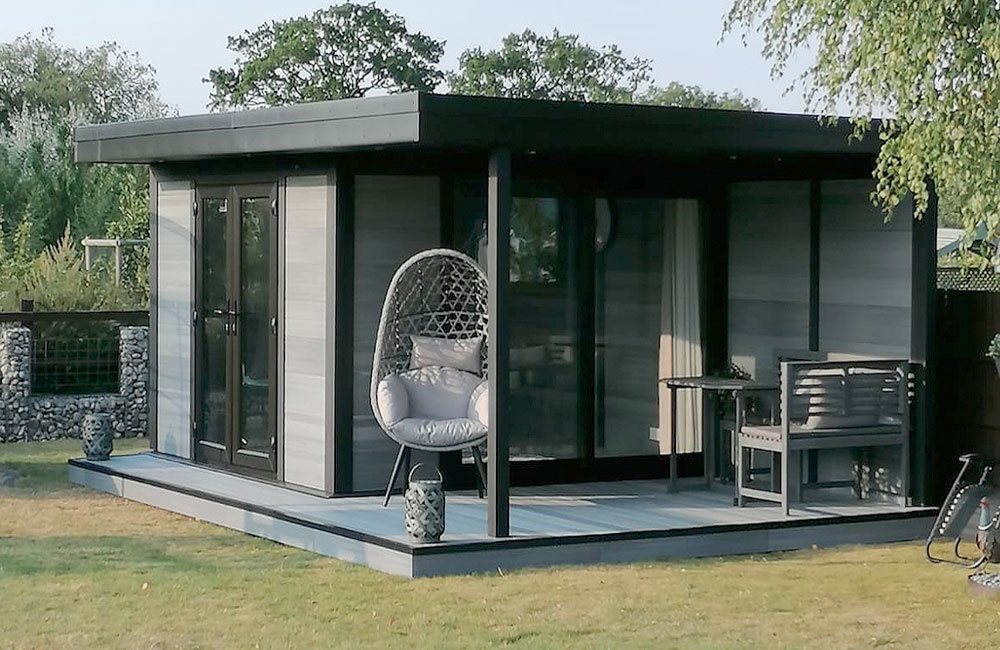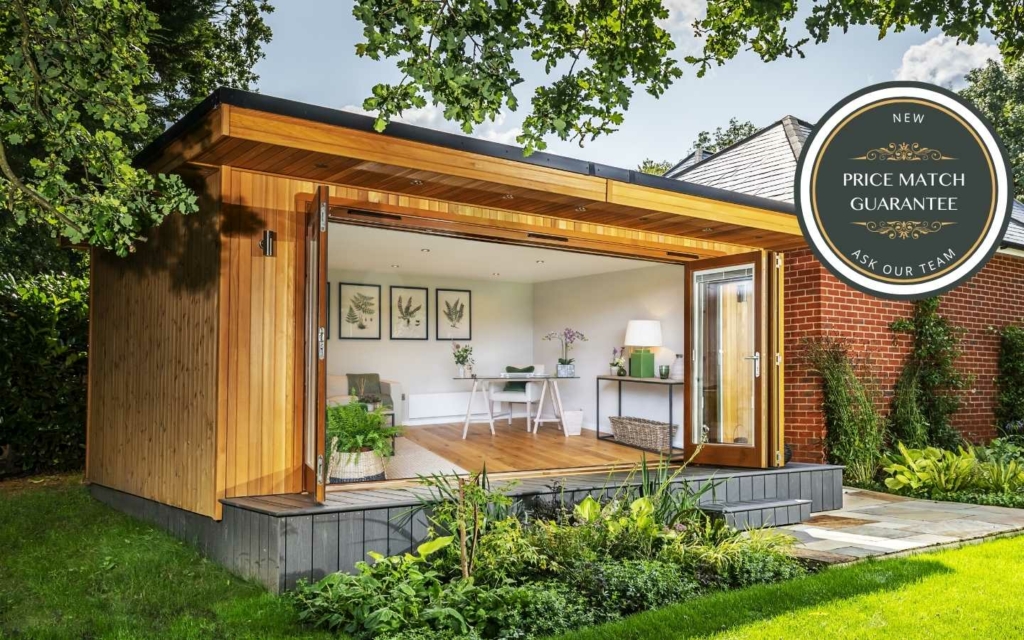Best Advice For Planning Permission On Garden Conservatories
Best Advice For Planning Permission On Garden Conservatories
Blog Article
What Planning Permissions Do You Require To Construct Garden Rooms In Conservation Areas?
Certain restrictions are in place for the construction of conservatories, garden rooms, outhouses or garden offices within conservation areas. These restrictions are designed to protect the beauty and character of these designated areas. The planning permission granted to conservation areas is determined by the following factors:
A conservation area could require planning permission for any building extension, addition or any other construction which is normally covered by permitted development rights. This is the case for sheds, garden rooms and other outbuildings.
Size and Scale
If they affect the style or appearance of the region the structure of any size may require planning permission. Limitations on size and scale apply to new structures and extensions, as compared to areas that are not designated.
Location:
The majority of the time, planning permission will be needed for any extension or building situated on the front and side of a house. Planning permission is required for rear structures when the structure is visible from public areas or impacts the overall character.
Materials and Design
It is crucial to select design and materials that are in line with the historical or architectural value of the area. The materials utilized for any extension or new construction must be compatible with the architectural or historic interest of the region. To meet these criteria, you will require planning permission.
Demolition:
Planning permission is usually needed in conservation areas to make sure that the modifications made are in line with an region's distinct nature.
Height Restrictions:
In conservation areas there are more strict restrictions on height. Any structure that is more than 2.5 meters in height (especially within 2 meters of the boundary line) will likely require approval for planning.
The impact on the surrounding Environment:
Planning approval is required if the extension or building being proposed has a significant impact on the appearance or setting of the conservation area, including the views from and across the conservation area.
The building is used for:
Planning permission might be required even if the garden or outbuilding falls within the allowed dimensions. This could be due to changes in the usage of the house.
Changes and expansions
Extensions that exceed specific size or volume limits or alter the external appearance of the building usually require approval from the planning department. This applies to conservatories as well as other major changes.
Curtilage Structures:
The structures within the curtilage of a listed building in a conservation zone must always be approved for planning. This applies to any expansions or changes, as well as new outbuildings.
Trees that are protected
The trees are protected in conservation areas. If you intend to build a structure on trees other permits, such as tree works consent and planning permissions, might be needed.
Local Authority Guidelines
Local planning authorities can establish guidelines and limitations that are specific to each conservation zone. They may have specific rules regarding what's allowed and not allowed, which are adapted to the character of the specific area.
Planning permission is mandatory for conservation areas. It requires an in-depth analysis of the effect that the extension, garden room, conservatory, outhouse or garden office could affect the historical and architectural characteristics of the region. An early consultation with the local planning authority is crucial to ensure that the project is in compliance with all guidelines and regulations. View the most popular 4m x 3m garden room for more tips including outhouse, best heater for log cabin, outhouse for garden, garden room heater, costco garden buildings, costco garden office, garden room conservatory, costco garden rooms, garden rooms in St Albans, what size garden room without planning permission uk and more.
What Is The Permission For Planning Required For Gardens, Etc.?
If you are planning to construct conservatories or garden rooms, outhouses or gardens offices on the grounds of a listed property There are particular considerations that must be taken into consideration. The following are key considerations when preparing such projects.
Usually, modifications and extensions or new structures within the boundaries of a building that is designated requires approved listed building permits as well as approval for planning. These are because any changes could impact the character and special importance of the listed property.
Impact on Historical Character:
Any new or extended construction that might alter the character or appearance of the historic building or the listed building, or its surroundings, needs approval for planning. Garden rooms and outbuildings are part of the list.
Materials and Design:
The style of a brand new structure needs to be in line with the architectural and historic significance of a listed building. It is possible that this would need the use and layout of materials from the past. It will also require approval for planning.
The building is situated in close proximity to the listed building:
It is essential to take into consideration the potential impact on any future structures that are constructed near to the historic building. Planning permission is required to ensure they do not hinder the building's appearance.
Size and Scale
The proposed garden room size, conservatory size, or extension scale must be proportionate with the listed building. Permission for planning and detailed assessment are more likely to be required for larger structures.
The location within the property:
The position of your new structure (whether it is in front, to the side, or at the back of the structure) will determine whether you require permission to plan. Locations visible from the street or which impact key views of the building are usually subject to greater scrutinization.
Internal Changes:
Even if it is an unattached structure, any modifications to a listed building (such as the construction of new entry points) require both planning permission and listed-building approval.
Conservation Area Overlap
If the building is located in a conservation zone, additional restrictions are in place. To ensure compliance with the listed building regulations as well as conservation area regulations Planning permission is required.
Building use:
Planning permission is usually needed in relation to the intended use of the garden room, or outbuildings, may have. The planning authority will pay greater attention to uses that indicate significant changes, such residential or commercial usage.
Structural impact:
Planning approval is required for any construction that may affect the structural integrity or the building. This ensures that the existing and future structures are seamless.
Local Authority Guidelines:
Local authorities usually provide specific guidelines to listed buildings that outline the kinds of construction and modifications that are allowed. Planning permission is required to ensure that these guidelines are followed.
Professional Assessments:
Proposals for work on listed buildings typically require extensive evaluations by conservation experts. These assessments are used to determine if the proposed changes are appropriate and to support the application for planning permission.
In short the planning permit and listed building consent are almost always required when constructing garden rooms, conservatories, outhouses, garden offices or extensions that are part of an listed building. Consult with the local planning authority and heritage experts before beginning the planning process is essential to ensure that the building is in compliance with all relevant regulations and to ensure the historical and architectural integrity of your property. Take a look at the best composite garden room for more tips including outhouses, insulated garden buildings, gym outhouse, garden room or extension, outhouse garden, outhouse garden, garden room conservatory, outhouses, garden office hertfordshire, what size garden room without planning permission and more.
What Planning Permissions Do You Require For Gardens, Etc. With Regard To Utilities And Infrastructure?
If you're contemplating building a conservatory, garden room outhouses (garden offices), or an extension, utility and infrastructure considerations are essential. This will affect the necessity for a permit to plan. Here are some of the most important aspects to consider regarding water supply and drainage
If the new structure requires connections to water supply or drainage systems, planning approval could be required. The local authority responsible for water might have to consider the impact on the local water and sewage system.
Gas and Electricity Connections:
If you are planning to connect a new building to an electricity or gas supply, you might need a planning permission. Compliance with building regulations and safety standards is vital to connect these lines.
Utility Easements
Planning permission may be required if the proposed structure is situated in an area designated for utilities and infrastructure. In these areas, construction may require the approval of the local utility company.
Septic Tanks and Sewage Systems:
It is essential to get planning permission when installing a septic-tank or sewer system in your home. It is vital that these systems comply with all environmental regulations as well as the health regulations.
Drainage and Surface Water Management
A planning permit could be required to tackle surface water runoff and drainage from the new structure. To prevent flooding and erosion as well as polluting water, it may be required to implement certain steps.
Access to Utilities for Construction
In the event that construction requires access to utilities for a short period of time (such as water to be used for reasons of construction) the planning permit may be required. The temporary connection must meet the standards of safety and environmental protection.
Impact on Local infrastructure
Planning permission is required to assess the impact of the new structure on local infrastructure, including roads, utilities, and public services. Local authorities will evaluate whether existing infrastructure is able to accommodate the development.
Waste Management and Recycling
Planning permission could include requirements for waste management as well as recycling after construction. To minimize environmental impact, there should have provisions in place for recycling as well as waste disposal.
Energy Efficiency and Renewable Energy
Planning permission may be needed to put in energy-efficient features or systems for renewable energy (such as solar panels or heat pumps) within the new building. The building code and environmental standards should be adhered to.
Telecommunications as well as Internet Connectivity:
Planning approval is required for any new structures which require telecommunications or internet connections. In accordance with requirements and standards for the infrastructure of telecommunications.
Accessible via Footpaths and Roads
Planning permission may be required to create or modify access roads or footpaths to the new structure. Footpaths and roads must conform to the highest safety standards.
Accessibility to Public Transport
Planning permission could be needed when the proposed structure has any impact on public transport (such as stops for buses or train stations). Conformity with the regulations and standards for public transport infrastructure is crucial.
In the end the importance of infrastructure and utilities are critical factors in determining whether planning permission is required for conservatories, garden rooms outhouses, garden extensions, offices or other buildings. To ensure that all rules and standards are followed it is crucial to talk with your local planning authority at an early phase of the planning process. See the recommended planning permission for garden office for website info including garden office electrics, garden room planning permission, ground screws vs concrete base, garden room permitted development, garden room vs extension, out house, costco garden rooms, garden room planning permission, outhouse garden, garden room conservatory and more.